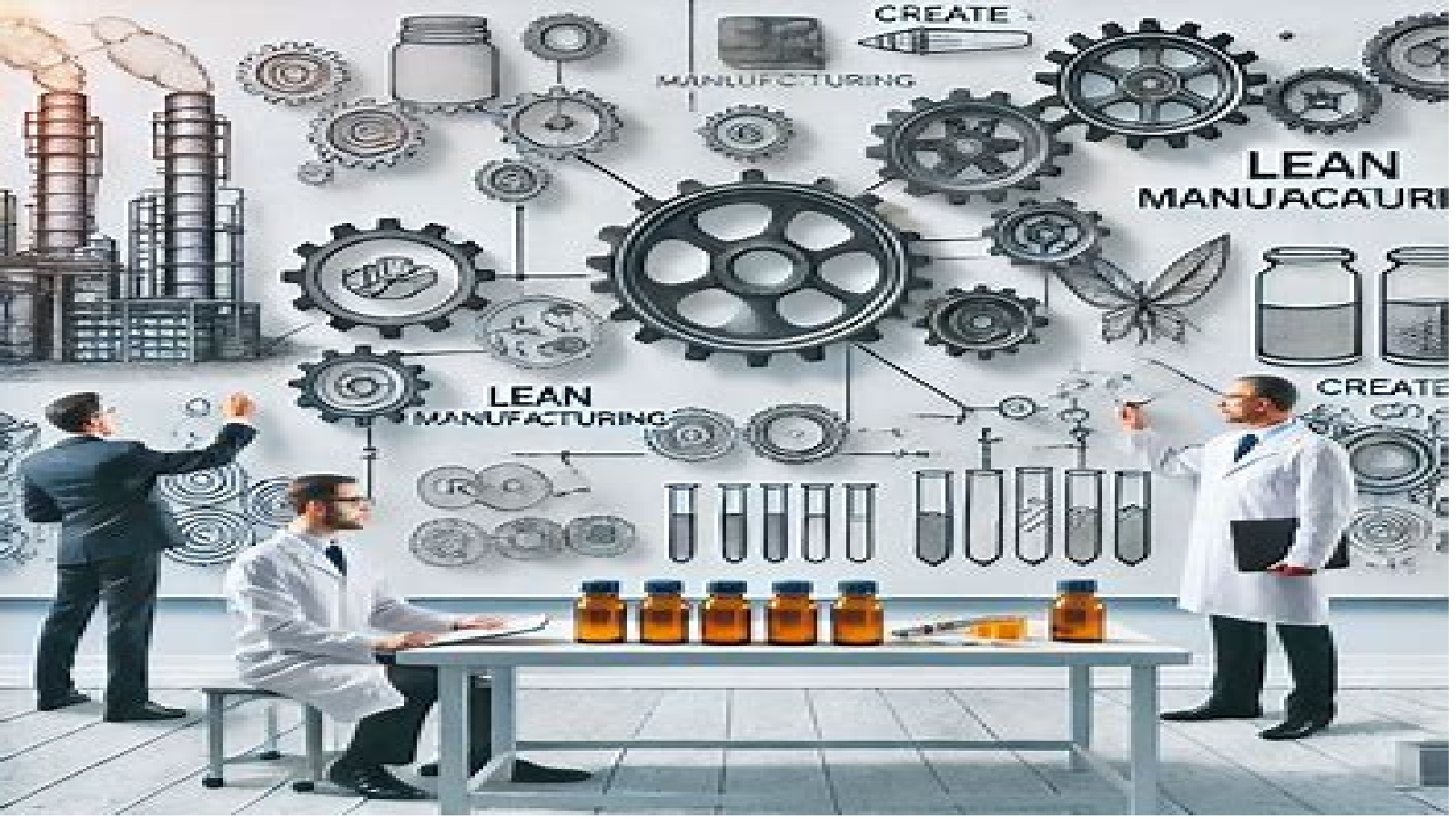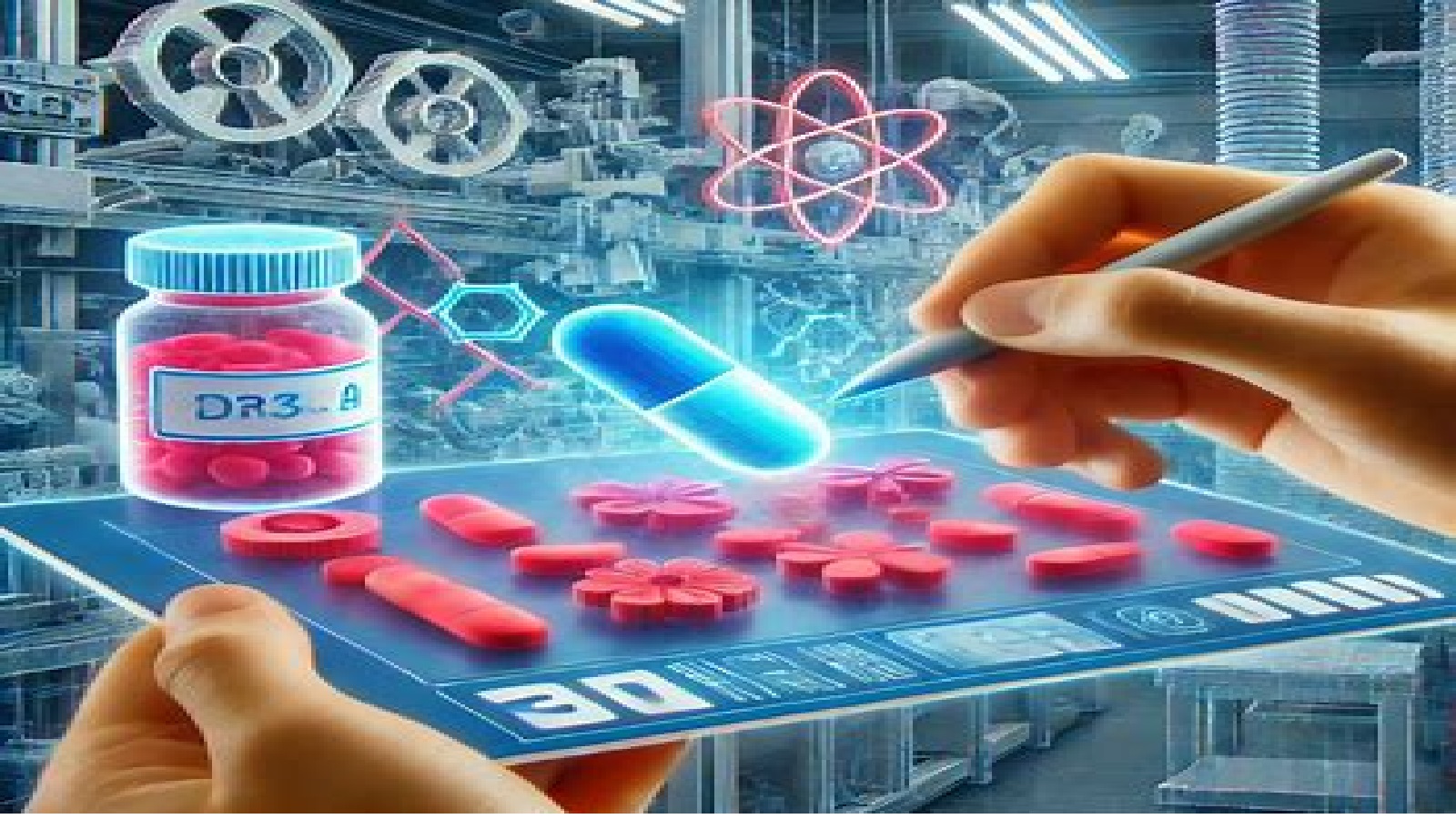1. Automation in Pharmaceutical Manufacturing
1.1. Introduction to Automation in Pharmaceuticals
1.1.1 What is Automation?
Automation involves using machines, control systems, and software to perform tasks with minimal human intervention. In pharmaceutical manufacturing, it encompasses everything from production lines to quality control.
1.1.2 Why is Automation Important?
Pharmaceutical manufacturing demands high accuracy and compliance with strict quality standards. Automation addresses these needs by minimizing errors, enhancing productivity, and reducing operational costs.
1.2. Key Areas of Automation in Pharmaceutical Manufacturing
1.2.1 Drug Production
Automated systems streamline drug formulation and production by precisely measuring ingredients, maintaining process parameters, and ensuring consistent product quality.
1.2.2 Packaging and Labeling
Automated packaging lines handle tasks like filling, sealing, and labeling with speed and accuracy, reducing manual errors and ensuring compliance with regulatory requirements.
1.2.3 Quality Control and Assurance
Automated quality control systems use sensors, cameras, and AI algorithms to inspect products for defects, ensuring they meet strict quality standards before reaching consumers.
1.2.4 Inventory and Supply Chain Management
Automation helps manage inventory by tracking raw materials and finished goods, optimizing storage, and preventing stockouts or overstocking.
1.3. Benefits of Automation in Pharmaceutical Manufacturing
1.3.1 Enhanced Precision and Accuracy
Automated systems minimize human errors, ensuring consistent product quality and dosage accuracy.
1.3.2 Improved Productivity
Automation increases the speed of production, enabling manufacturers to meet growing demands while maintaining efficiency.
1.3.3 Cost Reduction
By reducing waste, energy consumption, and labor-intensive processes, automation significantly lowers manufacturing costs.
1.3.4 Regulatory Compliance
Automation ensures adherence to Good Manufacturing Practices (GMP) and other regulatory standards by maintaining detailed records and minimizing deviations.
1.4. Technologies Driving Automation in Pharmaceuticals
1.4.1 Robotics
Robots perform repetitive tasks like material handling, filling, and inspection with high precision and reliability.
1.4.2 Supervisory Control and Data Acquisition (SCADA)
SCADA systems monitor and control manufacturing processes in real time, ensuring optimal performance and immediate response to deviations.
1.4.3 Process Analytical Technology (PAT)
PAT tools enable real-time analysis of critical quality attributes, ensuring consistent production and reducing the need for post-production testing.
1.4.4 Internet of Things (IoT)
IoT devices connect machinery, systems, and sensors, enabling seamless communication and efficient process management.
1.5. Challenges in Implementing Automation
1.5.1 High Initial Investment
The cost of acquiring and implementing automated systems can be a barrier for small and medium-sized manufacturers.
1.5.2 Skill Development
Automation requires a workforce skilled in operating and maintaining advanced technologies, necessitating continuous training and upskilling.
1.5.3 Integration with Existing Systems
Integrating new automation solutions with legacy systems can be complex and time-consuming.
1.6. Future Trends in Automation for Pharmaceuticals
1.6.1 Smart Manufacturing
The future lies in smart factories that leverage artificial intelligence (AI), machine learning, and real-time data analytics to optimize every aspect of production.
1.6.2 Continuous Manufacturing
Automation is facilitating a shift from traditional batch production to continuous manufacturing, which offers faster production cycles and improved quality.
1.6.3 Advanced Robotics and AI Integration
The integration of AI-powered robotics is set to further revolutionize pharmaceutical manufacturing by enabling autonomous decision-making and predictive maintenance.
2. Artificial Intelligence (AI) in Drug Manufacturing
2.1 Accelerating Drug Discovery
AI algorithms analyze vast datasets to identify potential drug candidates in a fraction of the time required by traditional methods. Machine learning models predict how compounds will behave, significantly shortening the drug discovery timeline.
2.2 Optimizing Production Processes
AI optimizes complex manufacturing processes by analyzing patterns and identifying inefficiencies. This helps in achieving higher yields and minimizing waste.
2.3 Quality Assurance with AI
AI-powered visual inspection systems detect defects and inconsistencies in products more accurately than manual inspections, ensuring compliance with regulatory standards.
3. The Role of Internet of Things (IoT)
3.1 Connected Manufacturing Systems
IoT connects machines, systems, and devices within a manufacturing facility, enabling seamless communication and data exchange. This interconnectedness allows for smarter decision-making and improved process control.
3.2 Supply Chain Management
IoT devices track and monitor raw materials and finished products across the supply chain, ensuring transparency and reducing delays.
4. Advanced Robotics in Manufacturing
4.1. Introduction to Robotics in Pharmaceutical Manufacturing
4.1.1 What Are Advanced Robotics?
Advanced robotics refers to the integration of intelligent, programmable machines designed to perform complex tasks with precision and consistency.
4.1.2 Why Robotics in Pharmaceuticals?
Pharmaceutical manufacturing demands high accuracy, consistency, and compliance with stringent regulatory standards. Robotics helps achieve these goals by minimizing human error and enhancing operational efficiency.
4.2. Applications of Advanced Robotics in Pharmaceutical Manufacturing
4.2.1 Drug Production and Compounding
Robots are employed in drug formulation processes, ensuring precise measurement and mixing of ingredients. This minimizes variability and ensures consistent product quality.
4.2.2 Packaging and Labeling
Automated robotic systems handle tasks like filling, sealing, and labeling with high speed and accuracy. This reduces manual intervention, ensuring regulatory compliance.
4.2.3 Sterile Manufacturing
Robots play a crucial role in aseptic environments, reducing the risk of contamination by performing tasks like vial filling, capping, and inspection.
4.2.4 Quality Control and Inspection
Advanced vision systems integrated with robots perform real-time inspections, identifying defects in products with unparalleled accuracy.
4.2.5 Material Handling and Logistics
Automated Guided Vehicles (AGVs) and robotic arms streamline material transport, reducing the need for manual handling and improving safety.
4.3. Benefits of Advanced Robotics in Pharmaceuticals
4.3.1 Enhanced Precision and Accuracy
Robots ensure consistency in tasks such as dosing, filling, and inspection, meeting stringent quality standards.
4.3.2 Increased Productivity
Robots work tirelessly around the clock, increasing production speed and meeting the growing global demand for medicines.
4.3.3 Cost Efficiency
Although initial investments in robotics can be high, the long-term savings in labor costs, waste reduction, and enhanced efficiency outweigh the costs.
4.3.4 Improved Safety
By performing tasks in hazardous or sterile environments, robots protect human workers from potential risks.
4.4. Key Technologies in Advanced Robotics
4.4.1 Collaborative Robots (Cobots)
Cobots work alongside human operators, performing repetitive tasks like assembly, inspection, and packaging.
4.4.2 Robotic Process Automation (RPA)
RPA involves the use of software robots for automating repetitive tasks such as data entry and documentation, improving operational efficiency.
4.4.3 Vision Systems and AI Integration
Robots equipped with AI-powered vision systems can identify defects, analyze patterns, and adapt to new tasks with minimal programming.
4.4.4 Automated Guided Vehicles (AGVs)
AGVs navigate manufacturing facilities autonomously, transporting raw materials and finished goods efficiently.
4.5. Challenges in Adopting Robotics in Pharmaceutical Manufacturing
4.5.1 High Initial Investment
The cost of acquiring and implementing robotic systems can be a barrier for smaller manufacturers.
4.5.2 Training and Workforce Adaptation
Introducing robotics requires a skilled workforce capable of operating, maintaining, and programming these systems.
4.5.3 Regulatory Compliance
Ensuring that robotic systems meet global regulatory standards can be complex, requiring rigorous testing and validation.
4.6. Future Trends in Robotic Pharmaceutical Manufacturing
4.6.1 Autonomous Manufacturing
The future will see fully autonomous factories powered by advanced robotics, AI, and IoT, ensuring seamless and efficient operations.
4.6.2 Robotics in Personalized Medicine
Robots will play a key role in producing small batches of customized medicines, catering to individual patient needs.
4.6.3 Integration with Industry 4.0
Robotics will integrate with smart manufacturing technologies, enabling real-time data exchange and decision-making across the production line.
5. Continuous Manufacturing and Process Analytical Technology (PAT)
5.1. Introduction to Continuous Manufacturing (CM) and Process Analytical Technology (PAT)
5.1.1 What is Continuous Manufacturing?
Continuous Manufacturing replaces traditional batch processing with a streamlined, end-to-end production process. Materials are continuously fed and processed in a single system, resulting in faster and more efficient production.
5.1.2 What is Process Analytical Technology?
PAT is a framework introduced by the FDA to design, analyze, and control manufacturing processes through real-time monitoring of critical quality attributes (CQAs). It ensures that pharmaceutical products meet predefined quality standards consistently.
5.2. Continuous Manufacturing in Pharmaceuticals
5.2.1 Advantages of Continuous Manufacturing
- Faster Production: CM eliminates downtime between batches, significantly reducing production time.
- Improved Efficiency: Continuous processes use raw materials more efficiently, minimizing waste.
- Consistent Quality: Real-time monitoring ensures uniformity in product quality across the entire production cycle.
- Flexibility: CM systems can quickly adapt to changes in production volumes or formulations.
5.2.2 Applications of Continuous Manufacturing
- Solid Dosage Forms: CM is widely used for tablets and capsules, enabling precise control over dosage and consistency.
- Biopharmaceuticals: Continuous bioreactors and purification systems are transforming the production of biologics.
- Personalized Medicine: CM allows for small-batch production tailored to individual patient needs.
5.3. Process Analytical Technology (PAT) in Pharmaceuticals
5.3.1 Components of PAT
- Analytical Tools: Sensors and instruments that monitor CQAs, such as particle size, temperature, and concentration.
- Process Models: Statistical and mathematical models that predict process behavior and outcomes.
- Real-Time Feedback Systems: Automated systems that make immediate adjustments to maintain optimal conditions.
5.3.2 Benefits of PAT
- Enhanced Product Quality: PAT ensures consistent adherence to quality standards by monitoring critical parameters.
- Reduced Waste: Real-time adjustments prevent deviations, minimizing waste.
- Regulatory Compliance: PAT provides detailed data and insights that facilitate compliance with Good Manufacturing Practices (GMP).
5.4. The Integration of CM and PAT
5.4.1 Real-Time Quality Control
PAT tools are seamlessly integrated into CM systems to monitor and control processes in real time. This ensures that any deviations are corrected immediately, maintaining product integrity.
5.4.2 Data-Driven Manufacturing
The combination of CM and PAT generates extensive data on production processes. This data is analyzed to identify trends, optimize workflows, and improve overall efficiency.
5.4.3 Cost and Time Efficiency
By combining continuous processes with real-time monitoring, manufacturers can reduce production costs and accelerate time-to-market.
5.5. Challenges in Implementing CM and PAT
5.5.1 High Initial Investment
The infrastructure and technology required for CM and PAT implementation can be costly, posing challenges for smaller manufacturers.
5.5.2 Workforce Training
Adopting CM and PAT requires a workforce skilled in operating advanced equipment and interpreting complex data.
5.5.3 Integration with Legacy Systems
Many manufacturers face difficulties in integrating new CM and PAT systems with their existing batch-based processes.
5.6. Future Trends in CM and PAT
5.6.1 AI-Driven CM and PAT
Artificial intelligence (AI) is expected to further optimize CM and PAT by predicting outcomes and making autonomous adjustments in real time.
5.6.2 Continuous Biomanufacturing
The development of continuous processes for biologics production will revolutionize the manufacturing of vaccines, monoclonal antibodies, and other biopharmaceuticals.
5.6.3 Global Standardization
As CM and PAT adoption grows, industry-wide standards and best practices will emerge, facilitating broader implementation.
6. Blockchain for Traceability
6.1 Enhancing Data Security
Blockchain technology ensures secure and tamper-proof data records, enhancing transparency in the manufacturing process.
6.2 Counterfeit Prevention
By tracking every stage of the supply chain, blockchain helps in combating counterfeit drugs, ensuring only authentic products reach consumers.
7. Challenges and Future Prospects
7.1 Initial Investment Costs
While the adoption of advanced technologies requires significant initial investment, the long-term benefits outweigh the costs.
7.2 Regulatory Compliance
Adapting to evolving regulatory requirements for new technologies can be challenging. However, regulators are increasingly recognizing the value of innovation in improving patient safety.
7.3 The Future of Smart Manufacturing
The future of pharmaceutical manufacturing lies in fully automated, AI-driven smart factories. These facilities will leverage real-time data to adapt dynamically to market demands while maintaining uncompromised quality.
8. Conclusion
Advanced technologies, from automation to AI, are reshaping the pharmaceutical manufacturing landscape. These innovations not only optimize production but also ensure safer and more effective medications for patients worldwide. As these technologies continue to evolve, they promise to make pharmaceutical manufacturing more efficient, sustainable, and patient-centric.
For more articles, Kindly Click here.
For pharmaceutical jobs, follow us on LinkedIn
For Editable SOPs in Word format contact us on info@pharmaceuticalcarrier.com
For more information kindly follow us on www.pharmaguidelines.co.uk







